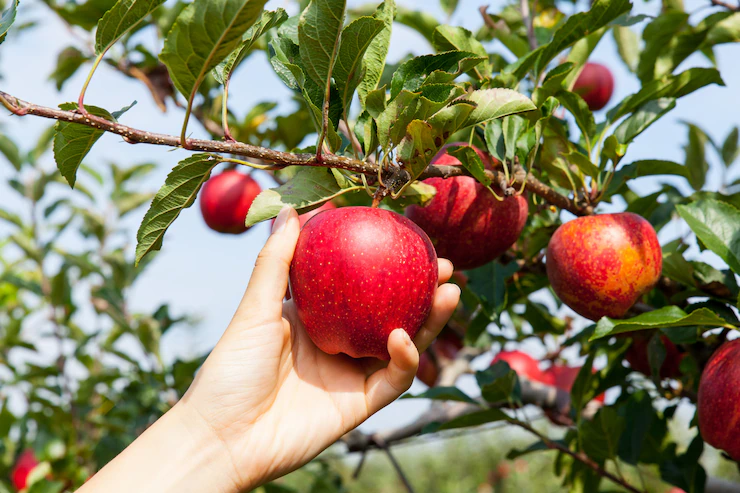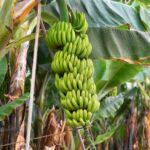When growing apples in South Africa, there are several infections and diseases that you should watch out for. Here are some common ones:
- Apple Scab (Venturia inaequalis): Apple scab is a fungal disease that affects apple trees. It causes dark, scaly lesions on leaves, fruit, and twigs. To manage apple scab, you should use resistant apple varieties, practice good sanitation by removing fallen leaves and infected fruit, and apply fungicides when necessary.
- Fire Blight (Erwinia amylovora): Fire blight is a bacterial disease that affects various fruit trees, including apple trees. It causes wilting, blackening, and “burning” of blossoms, shoots, and branches. To control fire blight, you should prune infected branches, use resistant apple varieties, and apply copper-based sprays during the dormant season.
- Cedar Apple Rust (Gymnosporangium juniperi-virginianae): Cedar apple rust is a fungal disease that requires both apple trees and cedar or juniper trees to complete its life cycle. It causes orange or rust-colored spots on leaves and fruit. To manage cedar apple rust, you should remove cedar or juniper trees near apple orchards and apply fungicides during the growing season.
- Powdery Mildew (Podosphaera leucotricha): Powdery mildew is a fungal disease that affects apple trees, particularly in areas with high humidity. It causes a powdery white coating on leaves, shoots, and fruit. To control powdery mildew, you should practice good air circulation, remove infected plant parts, and apply fungicides if necessary.
- Phytophthora Root Rot (Phytophthora spp.): Phytophthora root rot is a soil-borne disease that affects apple trees, particularly in poorly drained or waterlogged soils. It causes root rot, stunted growth, and wilting. To manage phytophthora root rot, you should improve soil drainage, avoid over-irrigation, and use resistant rootstocks.
- Apple Maggot (Rhagoletis pomonella): Apple maggot is an insect pest that attacks apple fruit. The female lays eggs under the skin of the fruit, and the larvae feed inside, causing fruit damage. To control apple maggot, you can use traps, insecticide sprays, or bagging techniques to physically exclude the pests from the fruit.
It’s important to regularly monitor your apple trees for any signs of infections or diseases. If you suspect any issues, it is recommended to consult with local agricultural extension services, agricultural experts, or plant pathologists who can provide specific guidance based on the local conditions and prevalent diseases in your area.








